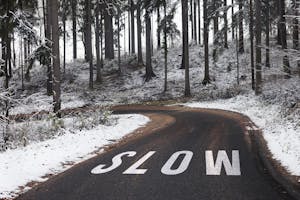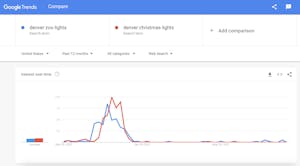- Business Management Tips
- Digital Marketing
- SEO
Preparing For Your Busy Season: Marketing & SEO Checklist
All Skill Levels
Join hundreds of other operators and REGISTER NOW for Spark 2024 New Orleans October 13-15th!

Most tour and activity operators experience some type of slow season. Whether you only offer summertime kayak tours or run year-round cooking classes, it’s normal for search trends for your core activities and services to fluctuate throughout the year.
No matter when your downtime happens, you can take advantage of it to optimize business practices. Modifying your offerings and promoting seasonal discounts are two key ways to navigate the slow season. But there’s also the matter of SEO.
Website traffic fluctuates throughout the year, especially if you offer seasonal activities like winter dog sledding tours. Understanding seasonal search patterns for your location and core business offerings will help you overcome the dips in traffic during the slow season.
Identify your industry patterns and unlock the potential of your slow season with these tactics for overcoming seasonal SEO dips.
If you suspect that your web traffic suffers a bit during your slow season, your best bet is to find out when demand for your activities occurs. Getting a handle on the general seasonal search patterns will help your SEO strategy. It can also keep you from incorrectly assuming a different problem is at play, such as a technical or competitor issue.
Use Google Trends to identify the search patterns for your industry. Start by entering a few search terms that are relevant to your business.

As you can see in this example, the terms “denver zoo lights” and “denver christmas lights” exhibit holiday or event-based seasonality, with a huge uptick in traffic from November to January and a big slump after the holiday lights wrap up in January.
Here are some other seasonal patterns you might see:
Pull the last five years of search trends for a few of your main keywords in your targeted geographical area. Depending on the type of business you run, it’s likely that you’ll notice a pattern that coincides with your most popular time of year. Write down the months that mark your slow season and get ready to reinvigorate your marketing and SEO efforts to overcome these slumps.
The best part of the slow season is having some more time on your hands. Use it to enhance your marketing plan and connect with potential customers year-round.
Coming up with content to post on your blog, add to your website, or include in an email newsletter feels easy when you’re at your busiest. You probably have a lot of topics to draw from, like an upcoming event or promotion. It’s during the slow season that content creation gets a bit harder. What should you write about?
Even if your target audience isn’t interested in summer activities in the middle of winter, there are many related topics that can pique their interest. For example, a blog post about things to do in your area works year-round. Google Trends can also show you when your relevant keywords begin to gain popularity once more – this is the perfect time to start ramping up your marketing before the start of your season when people are beginning to plan trips and activities.
You should also use Google Trends to find related topics that experience higher search volume during your slow season. Add major holidays and seasons to your editorial calendar and social media calendar to ensure you never miss a chance to engage with your audience.
One of the best things about travel is how it brings people together and broadens horizons. Your brand doesn’t have to focus solely on the tours and activities you offer. Instead, you can align your business with your customers’ other interests and partner with local businesses to stay relevant in the slow season.
For example, if you run winter dog sledding tours, you could assume that your typical customer enjoys outdoor activities and animals. There are so many other marketing initiatives that fall into those two categories. You could run a co-marketing campaign with another local business involved with animals, like a horse farm that offers riding tours. You can bring them business in the summer and, in return, they’ll expand your reach in the winter.
This might take the form of writing a guest blog on their website, doing a dog meet and greet during the summer, and offering discounts on each other’s tours and activities. Not only does this keep your company relevant year-round, but it also helps with local SEO.
 Pro tip: If you like the thought of partnering with other businesses, be sure to check out the FareHarbor Distribution Network. You can list your tours and activities on partner websites and/or resell other tour operator offerings in your area to drive additional traffic to your website. Plus, your tours and activities can be distributed on popular travel websites to expand your reach.
Pro tip: If you like the thought of partnering with other businesses, be sure to check out the FareHarbor Distribution Network. You can list your tours and activities on partner websites and/or resell other tour operator offerings in your area to drive additional traffic to your website. Plus, your tours and activities can be distributed on popular travel websites to expand your reach.
You probably know a lot about your customers from interacting with them at your business. But do you know what they do during your slow season? A little audience research will go a long way and help your business stay relevant with your target demographic year-round.
Use tools like Facebook Audience Insights to see what kind of content your audience consumes year-round. By identifying what else they’re interested in, you can target seasonal opportunities to stay top of mind year-round.
Whether your slow season involves a lot of work or a much-deserved beach vacation, try to set aside some time to work on your SEO strategy. You’ll be thanking yourself when you’re at your busiest once again.